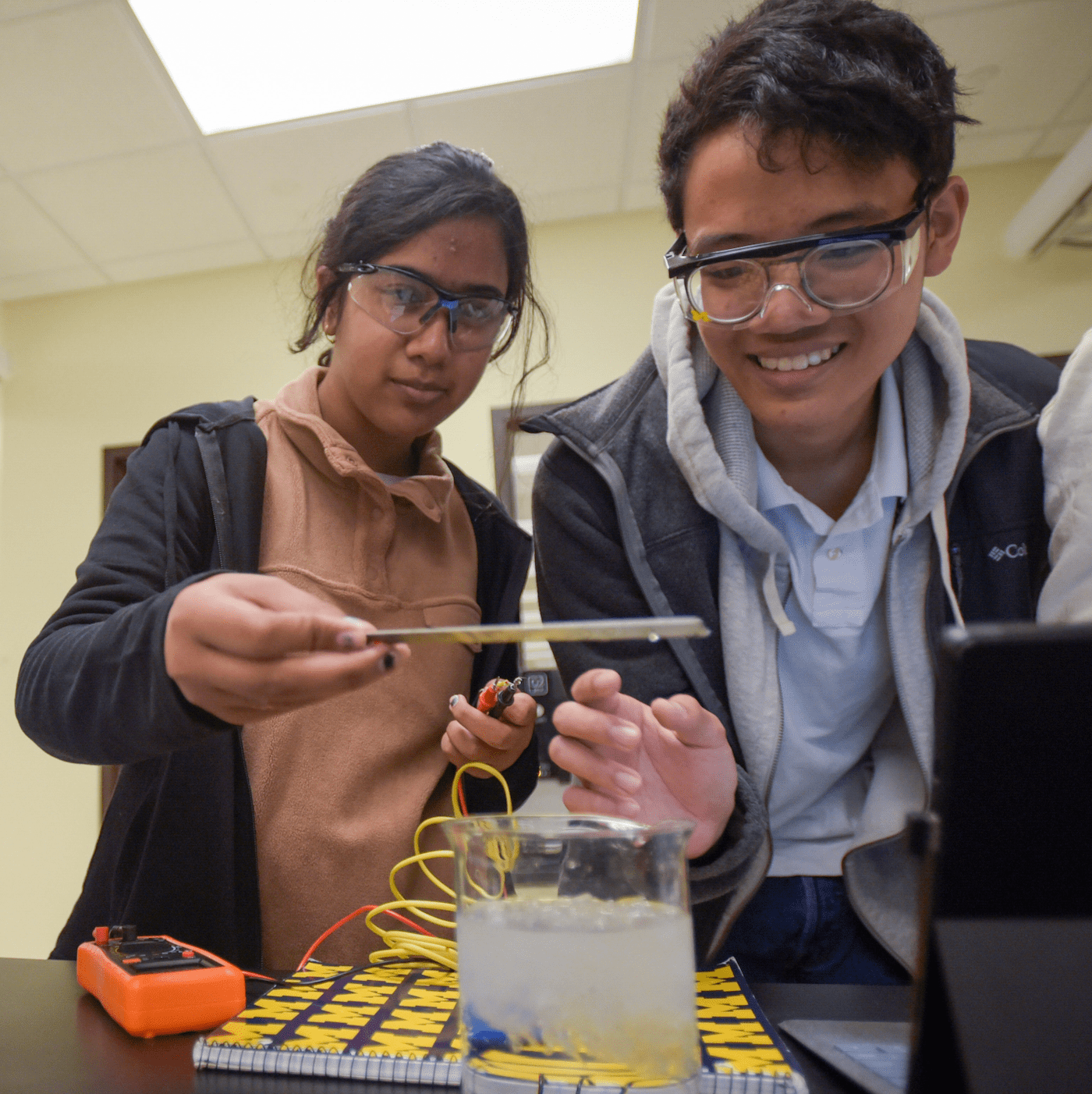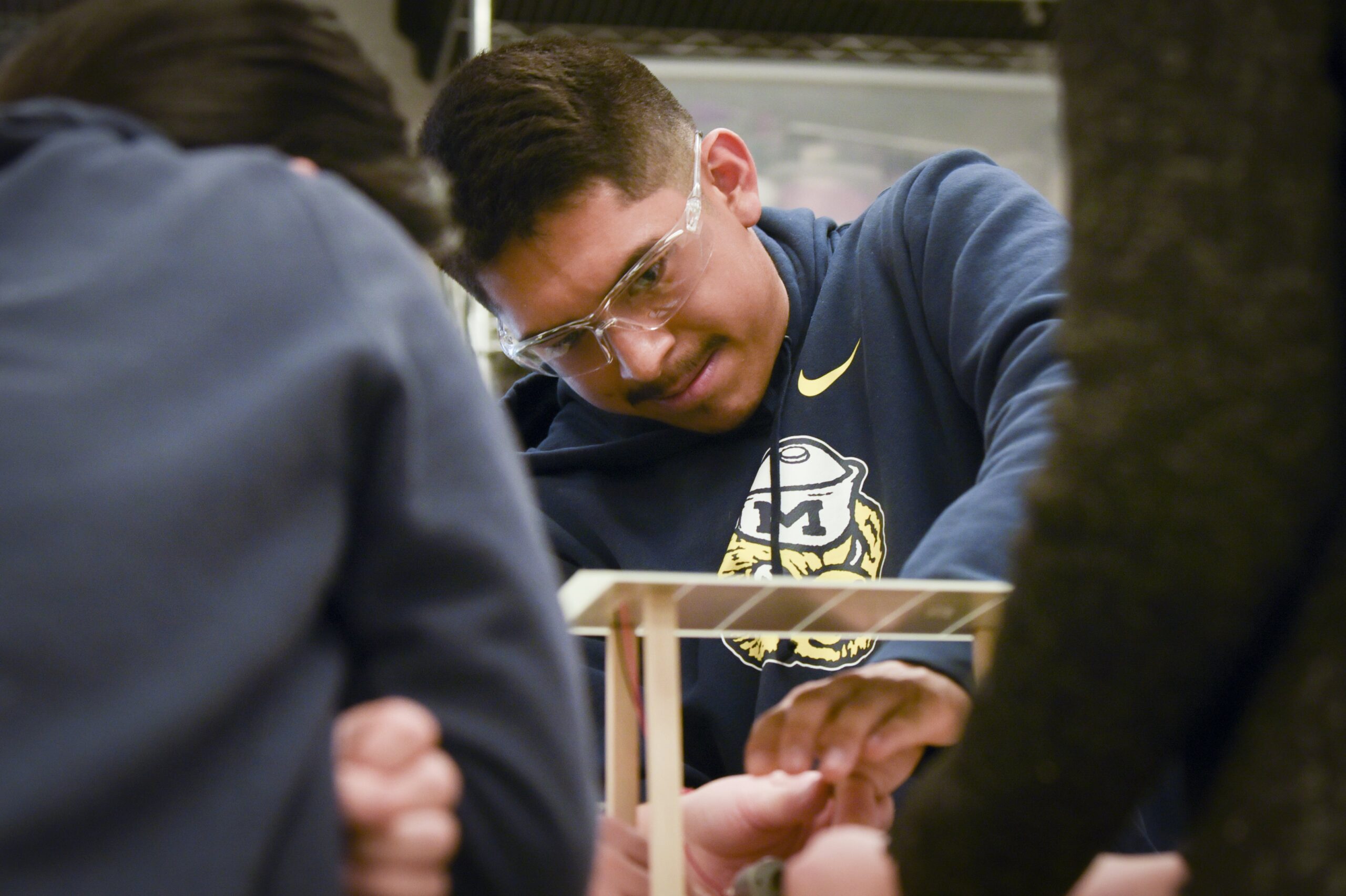ENGR 100:
INTRODUCTION TO
ENGINEERING
Check out our current section offerings!


WHAT IS ENGINEERING 100?
Engineering 100 is an engineering student’s first taste of what it is to be a practicing engineer! This project-based course simulates a real-world engineering environment. Each section asks students to complete an engineering project where they design a solution to an authentic, real-life problem. Students can choose from a range of different sections, each with its own project focus – from radiation mitigation to robotics to rocket science, and more!

“
”

WHAT WILL I LEARN?
Every ENGR 100 section shares the same four core learning outcomes. Students will learn to:
Employ
the Engineering Design Process
Communicate
Effectively as an Engineer
Collaborate
in Diverse Teams
Understand
and Practice Professional Engineering Values
WHAT MAKES ENGR 100 UNIQUE?

Engineering 100 helps Michigan Engineers learn how to integrate design, communication, teamwork, and people-first engineering in one unified experience. Uniquely, this course embeds writing and communication instruction (first-year writing requirement) within the engineering discipline. This discipline-specific writing instruction helps our students learn the professional communication skills necessary to build their engineering career.

FACULTY & STAFF
Meet our team of faculty and staff

AWARDS & PUBLICATIONS
We’re pleased to share some of the awards and publications we’ve received!

EXTERNAL PARTNERS
Meet our external partners and learn how to get involved

GSI INFORMATION
Learn how to get involved as a Graduate Student Instructor
How to Apply
To apply for an ENGR 100 GSI position, interested applicants should email the course instructor(s) associated with the section. Instructor information is updated in early March for the fall semester and early November for the winter semester. In the email, attach a cover letter and current resume that include your technical skills that relate to the position. You are notified by email of the status of your application. Applications are reviewed upon receipt, and offers are extended by the end of the current semester in most cases. Please note that not all sections of ENGR 100 hire GSIs; some only hire undergraduate Instructional Aides, and some hire a combination of both. All offers are contingent upon a successful background check. Both incoming and current graduate students are eligible for GSI positions. Please see the ADUE Class Size Policy for the GSI to student ratio in ENGR courses.




